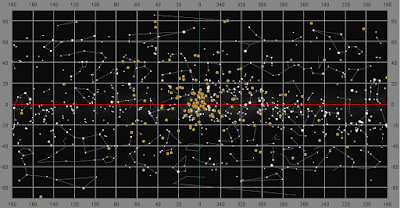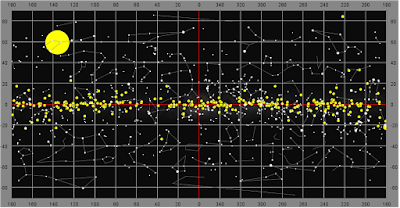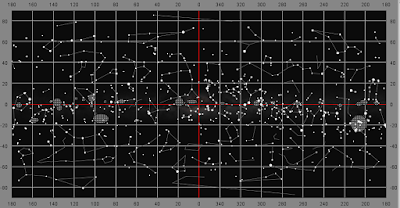I recalled that the old application Where Is M13? supported a "Sky View" cylindrical projection chart with the plane of our home galaxy flat, along the horizontal. Fired it up.
The horizontal line in the middle, at 0 degrees, shows the plane of the galaxy and alludes to the location of the main disc and the Milky Way's spiral arms.
The vertical line indicates where the centre of the galaxy is, the galactic core, and the suspected bar of our spiral.
Above is the built-in "all globular clusters" preset filter. You can see the orange circles are buzzing around the hub of the galaxy with some well above and below the plane of the Milky Way. They are old structures, perhaps important in the formation of a spiral galaxy.
I made a custom filter for the "diffuse nebulae" to show the dust and gas that may be the fuel for new star systems. The green squares follow along the arms of the galaxy. There is a big void around Aquila.
Chose the built-in preset for "all open clusters." It is very clear how tight they are to the arms of the galaxy. Note the obvious gap around Aquila. The big yellow disc is Collinder 285 aka the Ursa Major Moving Group. I believe our Sun is considered a member.
Again, I made a custom filter. This one shows the planetary nebulae. Not surprisingly, the blue marks are fairly in-line with the arms. The ones above and below are likely close to us.
I found an interesting filter, the "OB associations." Ron did not address these. These are regions of hot, young stars, living life fast. They tend to go out in spectacular fashion, as supernovae, starting the whole cycle again. The stippled patterns, you can see, are in the arms. And all around us. Except in Aquila.







No comments:
Post a Comment